Old-Yamazaki Detached Residence
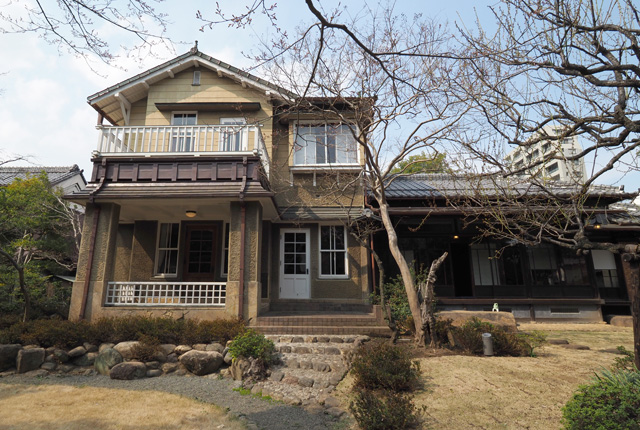
Without dissemination of information.
Yaoko Art Museum
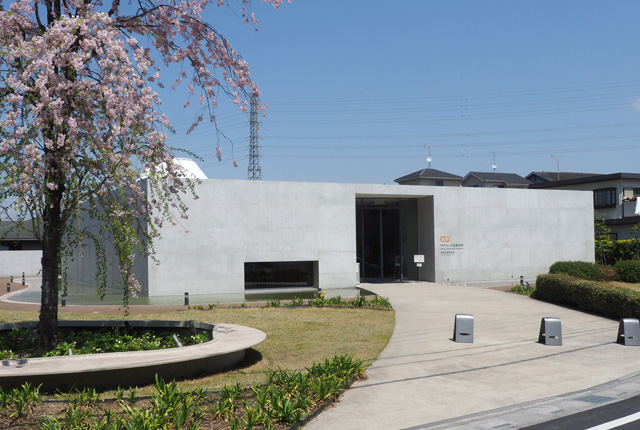
Without dissemination of information.
Myozenji Temple
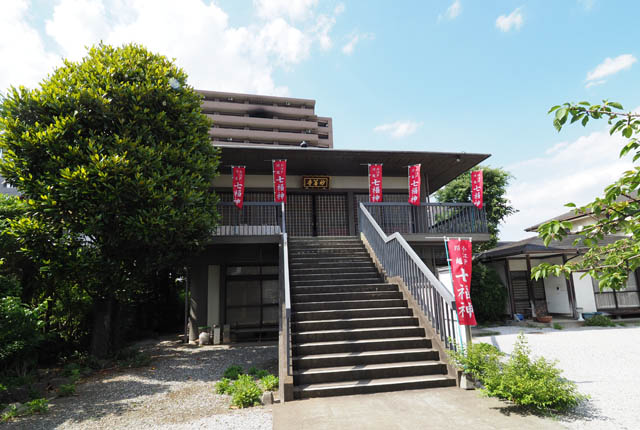
This is a Tendaishu temple where Bishamonten of the “Seven Divinities of Good Luck” are enshrined. People visit here as the first stop on the tour of temples dedicated to the Seven Divinities. It was established by Sonno-Houin, the 28th Semba-Chuin, for the pupose of commemorating his parents. The main image used to be the Yakushi-Nyorai when it was established. But now it is dedicated to Fudo-Myo-Oh as the main image with Amida Myorai, Kanzeou-bosatsu, and Bishamonten enshrined side-by-side. In the shrine grounds, is the stone “Satsumaimo Jizo (Sweet Potato Jizo),” built for the repose of the soul during the Muromachi-Era in 1693.
Tennenji Temple
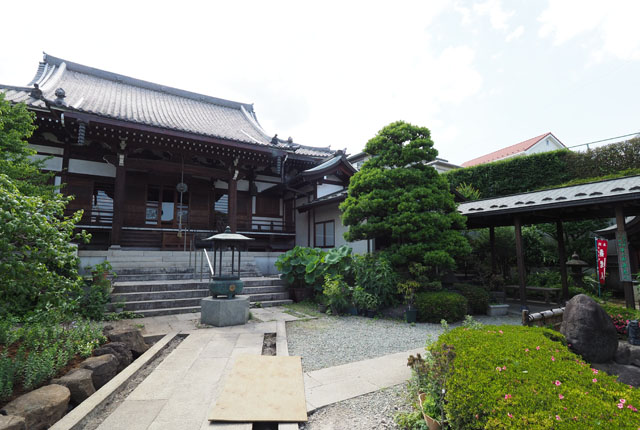
Also know as Shizenzan-Dainichiin, this temple enshrines Kongoukai Dainichi Nyorai, initiated by Jikaku Daishi. In September 1954, it was established by Eikai Shonin and enshrines Jibo Kannon and Roku Jizouson. In 1991, it was refurbished with a new main shrine, reception hall and abbacy. Also, it is know as the holy ground of Koedo Kawagoe Shichifukujin (Seven Divinities of Good Luck). It enshrines Jurouji and is the second stop on the tour of the Seven Divinities temples.
Naritasan Betsuin Temple
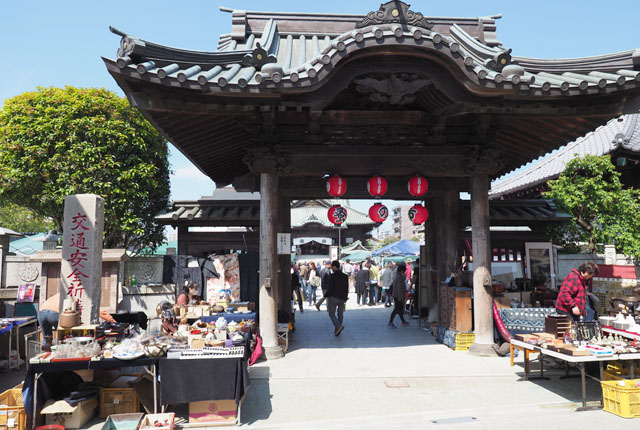
The originator of the Naritasan Hongyoin, Ishikawa Shouon Shonin, became blind and fell into deep despair. But, after making it through the austerities at Naritasan Shinshoji in Chiba, he overcame his handicap and was able to see again. After this experience, he established the Fudo Temple on the grounds of Yahata Jinja shrine in Kawagoe Toorimachi to enshrine Fudo-son separately from Naritasan Shinshoji. It was relocated to Kubomachi and enshrined with the principal image. It enshrines Ebisuten and is the fourth stop on the tour of Seven Divinities of Good Luck temples.
Toumyouji Temple
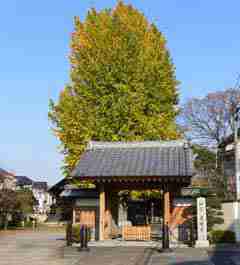
This is a Jishu temple located in Sidacho and established by Ippen, an itinerant preacher, in 1289. Kyokuuzo Bosatsu, the principal image of this temple, is an undisclosed statue produced by Jikaku Daishi. The image is enshrined in an operculated tetrahedral tower sculpted with reliefs of 6 Jizos (guardian child deities), with two Jizos standing side-by-side on three of the four walls, and an original story carved on the fourth wall. It is also known as the battlefield of Kawagoe Yasen (Kawagoe Night Battle) where 8,000 troops led by Hojo Ujiyasu defeated the allied force of 80,000 led by Uesugi Norimasa and others.
Renkeiji Temple
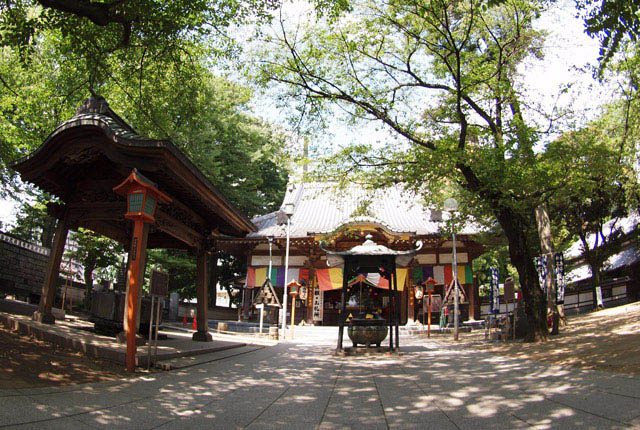
Renkeiji was established by Renkei Taishi, mother of Daidouji Suruganokami Masashige who was the General at the time, for the purpose of providing common people with a sanctuary in 1549. The wooden figure of “Obinzuru-sama,” placed in front of the prayer area, is known for its divine power to heal illness and injuries, and for making people smarter. A street fair is held on the 8th of each month on the temple grounds. It enshrines Fukurokuju and is the fifth stop on the tour of Seven Divinities of Good Luck temples.
Kenryuji Temple
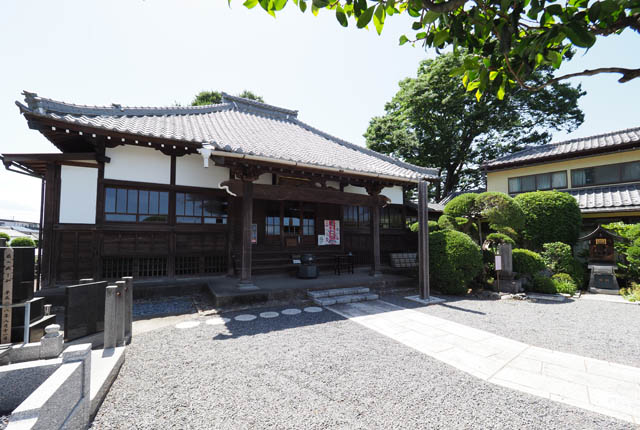
This is a Jodoshu temple near Shingashi River and Kashiya Yokocho (Candy Store Alley), established by Houjou Masashige, the General of Kawagoe Castle, in 1558. The existing main temple hall was built in 1881. It is also known for a tomb of the younger sister of Yatou Emoshichi, who was a member of the famous Forty Seven Ronins of “Ako Roushi (Ako Wandering Samurais).” It enshrines Hoteison and is the sixth stop on the tour of Seven Divinities of Good Luck temples.
Myoushouji Temple
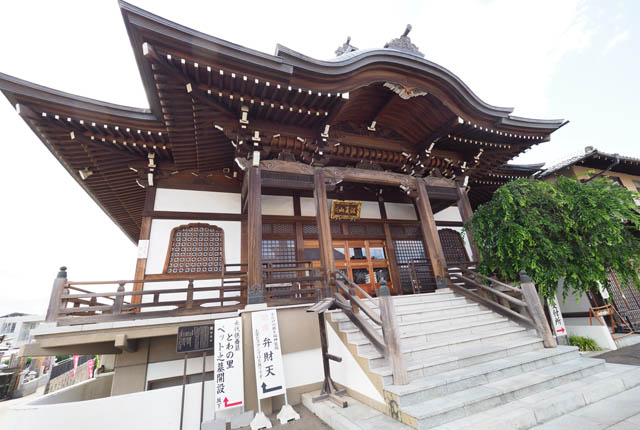
This temple was established by Nichizan-Shonin, the fourth head priest of Ikegami Honmonji Temple, in 1375. It used to be in Saiwai-cho and was relocated to the present location due to land improvements during the Edo Period. Jito (medieval land stewards) transcribe Buddhist scriptures on many pebbles and piled up them in a mound to form the basement of the main shrine. After Kawagoe Castle was completed, this temple was located on the southwest side, or the Ura-Kimon (Rear Deamon’s Gate) in Japanese orientation beliefs, of the castle and was revered by Ohta Dokan. It enshrines Benzaiten and is the seventh stop on the tour of Seven Divinities of Good Luck temples.
Kawagoe Hachimangu (Kawagoe Hachiman Shrine)
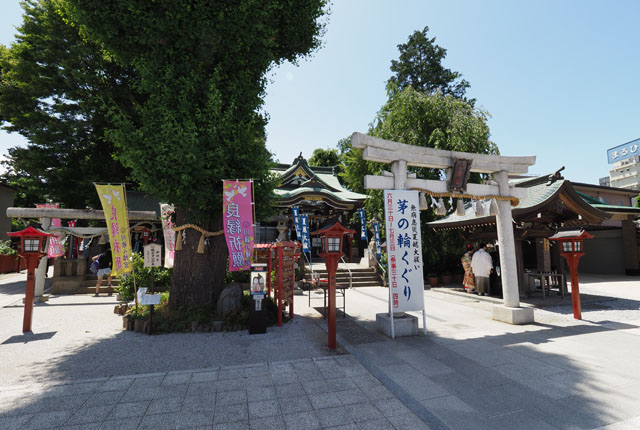
This is Ichinomiya (literally, the first shrine; the supreme shrine in the province) of Kawagoe, established by Minamoto Yorinobu in 1030 A.D., and located near where Maruhiro Department Store is now. It has been worshiped by numerous followers, both from and outside of the prefecture. The shrine has a large stout gingko tree called the “Nuptial Tie Ginkgo,” the origin of which was the fact that two different trees, one male and one female strain, were planted separately to celebrate the birth of Emperor Heisei, Akihito, and grew coherently and imperceptibly into one.



